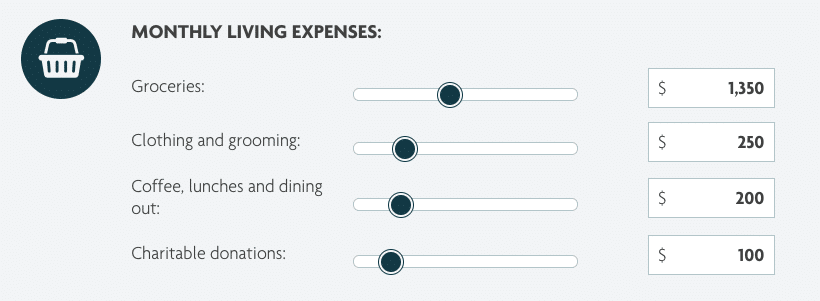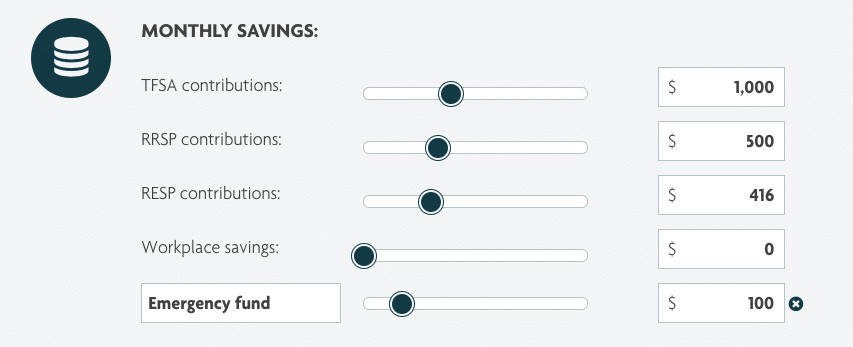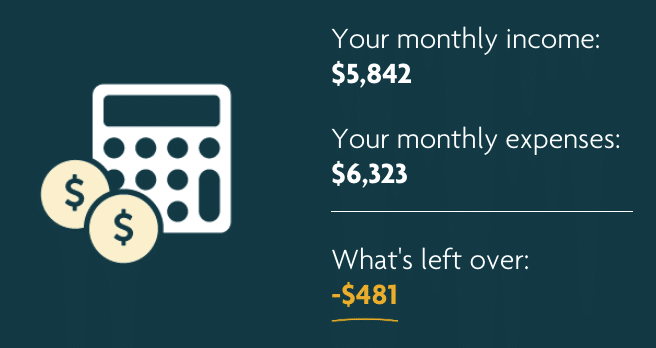Budgeting Basics For Your Financial Plan

Usually when someone reaches out looking for financial advice they want to jump right into investment selections or retirement planning. In many cases I walk them back to budgeting basics.
Specifically, how much income do you bring in and where does all your money go?
Without answering these two questions it’s nearly impossible to make any meaningful recommendations or changes to your financial plan to achieve your desired outcome or goals.
Monthly Income (more than you think)
Start with your monthly after-tax household income from every source. That means regular wages, pension or rental income, freelance earnings, and government benefits.

You can get creative here, too. For instance, you might use a cash-back credit card and earn $50 per month in cash-back rewards. That may not be taxable income (check with your accountant), but it’s income nonetheless.
Where I work we have to pay upfront for prescription drugs and other health-related spending and then apply for reimbursement through our health-spending plan. It averages out to about $200 per month. Make sure to include the reimbursements as income to offset the related spending.
Fixed Expenses (also more than you think)
Next I look at fixed expenses, which include housing costs such as rent or a mortgage payment, tenant or home insurance, property taxes or condo fees and utilities (which can vary from month to month but are pretty much unavoidable).
Transportation can be another fixed cost if you have a monthly car loan or lease payment, gas (again, variable but mostly unavoidable), car insurance and parking fees.
The cost of day care or elder care can also be treated as a fixed expense in your budget. Again, these costs are known in advance and can be budgeted for and planned. Kids’ activities, also a fixed expense. I know my kids’ piano lessons will cost $150 per month from September to June.
Now most people think of groceries as variable expenses, but it’s a fixed cost in our household. Here’s why:
I’ve tracked our household spending for a decade and one thing I’ve noticed is that our total grocery spend always falls somewhere between $1,250 and $1,450 per month.

Don’t get caught up in the number – we include toiletries and other sundry items in the “grocery” category. The point is it’s easy for us to budget for this category because it consistently falls within the same range every single month.
It’s a fixed expense for which I can easily budget $1,350 every month and be accurate to within +/- $100 every time.
Variable Expenses (or irregular expenses)
Variable expenses are irregular and mostly discretionary. Sure, you can decide not to buy any new clothes or put off your vehicle maintenance, but most of us do need new clothes from time to time and should take care of our vehicles to make sure they are safe and run properly.
Travel expenses, dining out and gift giving can also be considered variable expenses.
This is an important category that many soon-to-be retirees take for granted. It’s tricky to budget for because you can look at how much you’ve spent in the past but you also need to plan for the type of retirement you want and how important things like travel, recreation, dining, etc., will be to you in retirement.
Savings Expenses (a good idea to start here)
The final step in building your budget is to include your savings expenses. That’s right, we treat savings as expenses. You wouldn’t dream of missing your mortgage or utility payment. Why should you treat your RRSP or TFSA contributions any different?
The key to good savings habits is to make your savings automatic through payroll deduction or automatic transfers from your chequing account into your savings account, RRSP and/or TFSA on the day you get paid.

I like to start with my savings goals in mind and then build my budget around those goals.
For example, I knew I wanted to catch up on unused TFSA contributions this year and save $1,000 per month. I also wanted to max out my RRSP contribution room this year, which was about $500 per month. Finally, I’d max out the kids’ RESP contributions and save $416.66 per month towards their education.
Related: RRSP Over Contribution Limit and Carry Forward Rules
So right off the top of my monthly paycheque I wanted to whisk away about $2,000 to fund my savings goals.
Putting it all together
At the end of this mostly painless exercise we can determine how much is left over. A large surplus means opportunities to fund new savings goals or double up on existing ones.
It might also mean you haven’t accounted for all of your expenses – something’s missing in your budget and you might need three to six months’ worth of data before you start to see the whole picture.

A shortfall, on the other hand, means an opportunity to review your budget and find ways to improve your cash flow. Perhaps your savings goals are too ambitious and need to be pared back until your debts are paid off or until that raise or promotion kicks in at work.
Or maybe there’s an opportunity for you to earn more on the side through freelance work or some other side hustle that uses your expertise.
In some cases you might just need a cold dose of reality: You’re spending too much and need to find ways to save money on your variable and fixed expenses.
Final thoughts
The right tools can make budgeting a lot more palatable and, dare I say, exciting for the average Canadian who’s looking to improve his or her finances.
This useful budget calculator at Sun Life allows you to input everything I mentioned above, toggle your monthly income and/or expenses to view different outcomes, save your results online for later, or download and print a copy for yourself.
A good budget is the starting point for your financial plan and it can help drive many of the decisions around your savings and retirement goals. Don’t neglect your budget!


Best budgeting tool I’ve been using is Mint.com A little bit scary to give them read only access to your accounts, but the banks are all on board with it. Every expense that goes through your bank and or credit cards plus investments too, is tracked in there. It does a decent job of assigning categories but I usually login once per week and correct any mistakes. It also notifies you when you’ve gone over your budgeted amount in any category. Highly recommended for making your budgeting easy.
The tracking and income/expense organizing are great.
At least once a year, my wife and I also do a current balance sheet, to see if we are winning or losing the money struggle over time.